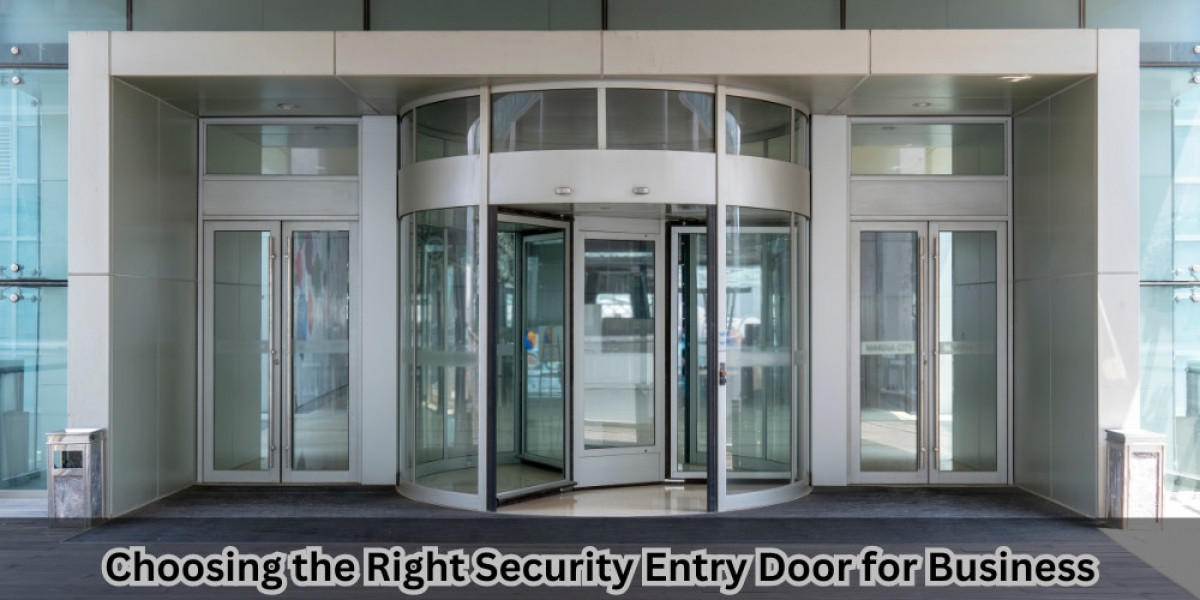When it comes to protecting your business, the entry door is more than just a way in it's a critical part of your security strategy. From retail stores and hospitality venues to office buildings and warehouses, choosing the right door could mean the difference between a secure property and a vulnerable one. These days, more businesses are exploring commercial door security solutions that combine strength, compliance, and smart technology to safeguard their premises effectively.
Years ago, I took over a lease for a retail space that looked spotless on paper until we realised the back entry was held shut by a flimsy deadbolt and little else. A near break-in served as a wake-up call, and it wasnt until we brought in a specialist to assess the building that we understood how layered and nuanced commercial security actually is.
Whether you're retrofitting an old building or setting up a brand new site, your choice of security entry door can affect safety, insurance premiums, and even your staffs peace of mind.
Factors to consider when choosing a commercial security door
Every commercial property has unique entry and access needs, so theres no universal best option. The right solution balances physical protection, legal compliance, and operational flow.
Heres what to weigh up:
Material
Steel, aluminium, and composite materials each offer trade-offs. Steel doors provide excellent security, but theyre heavier and require professional handling. Aluminium is lighter and often used in aesthetically driven environments like retail or hospitality.Compliance safety
Your door should meet local building codes and fire safety standards. Some buildings legally require self-closing fire-rated doors, especially in high-occupancy zones.Access control integration
Doors can be fitted with swipe card systems, keypads, or even biometric locks. For businesses with multiple entry points or zones, integrating with access software can be a game changer.Environmental conditions
Doors facing loading bays or external weather should include sealing, insulation, and resistance to moisture, salt air or dust, depending on the environment.Foot traffic and usage
High-traffic entries will wear faster. In these cases, look for heavy-duty hinges, commercial-grade closers, and scratch-resistant coatings.
Understanding your door options
Lets cut through the noise. Here are the four most common commercial-grade security door types, along with when and why they make sense:
Steel security doors
Ideal for warehouses, storage facilities, or anywhere that needs serious protection. Heavy, solid, often paired with industrial locks.Aluminium mesh doors
Lighter and more stylish great for cafs, retail, or medical centres. Strong mesh adds security without making the space feel closed off.Fire-rated doors
Required by law in many places, especially for internal corridors and back-of-house exits. Often made of treated steel with intumescent seals.Smart entry systems
Perfect for modern office fit-outs. These doors pair with software to track whos coming and going, often in real time.
What does the installation process actually look like?
One of the most common concerns we hear is: "How disruptive is this going to be?" The good news is that for most standard commercial installations, the process can be completed within a single day, sometimes even a few hours.
Key stages include:
Site inspection measurement
This helps assess whether the door frame needs reinforcing or if modifications are needed.Old door removal prep work
If a door already exists, this is factored into the time estimate. Installers check for alignment and structural integrity of the surrounding wall or frame.New door fitting testing
This involves secure anchoring, hinge calibration, and testing the swing or auto-close functions.Access system integration
If you're adding a keycard, keypad or sensor-based system, allow time for electrical work and programming.
I once managed an upgrade where we had to replace two warehouse doors. We scheduled the work for a Friday afternoon the team came in post-lunch, had both doors installed by dinner, and were testing the keycard system before 7 pm. Zero downtime. Learn more about the security door installation process, including estimated timelines, costs, and pre-installation tips.
How to choose the right installer: Red flags and must-haves
Even the strongest security door won't perform well if installed incorrectly. Heres what to look out for (and avoid) when selecting an installer:
Red Flags:
Verbal quotes only
If they wont give you a written quote, thats a no-go.No licensing or accreditation
Make sure the company is properly certified, especially for fire-rated doors and electronic access systems.Pushy upselling
Beware of installers who immediately jump to the most expensive option without discussing your actual needs.
Must-Haves:
On-site assessment
Any quality provider will visit your site to inspect, measure, and assess specific risks.Clear warranty coverage
You should receive product and workmanship guarantees, ideally in writing.Post-install support
Some vendors offer annual inspections or emergency call-out services, which can be useful in commercial environments.
Ask for examples of past commercial installations, especially ones similar to your industry. Photos, testimonials, or even case studies can offer peace of mind and set expectations for quality.
Final thoughts and legal considerations
At the end of the day, choosing a security entry door isnt just about preventing theft. Its about protecting staff, complying with insurance and safety laws, and making smart investments in your infrastructure.
But that peace of mind only comes when your solution meets both physical demands and NSW business security compliance. Mainly if you operate in retail, health, education, or food services, where legal compliance can be complex and costly to ignore.
Take your time, talk to experts, and weigh your options carefully. When chosen well, a security entry door becomes a seamless part of your operations solid, silent, and always watching your back.










